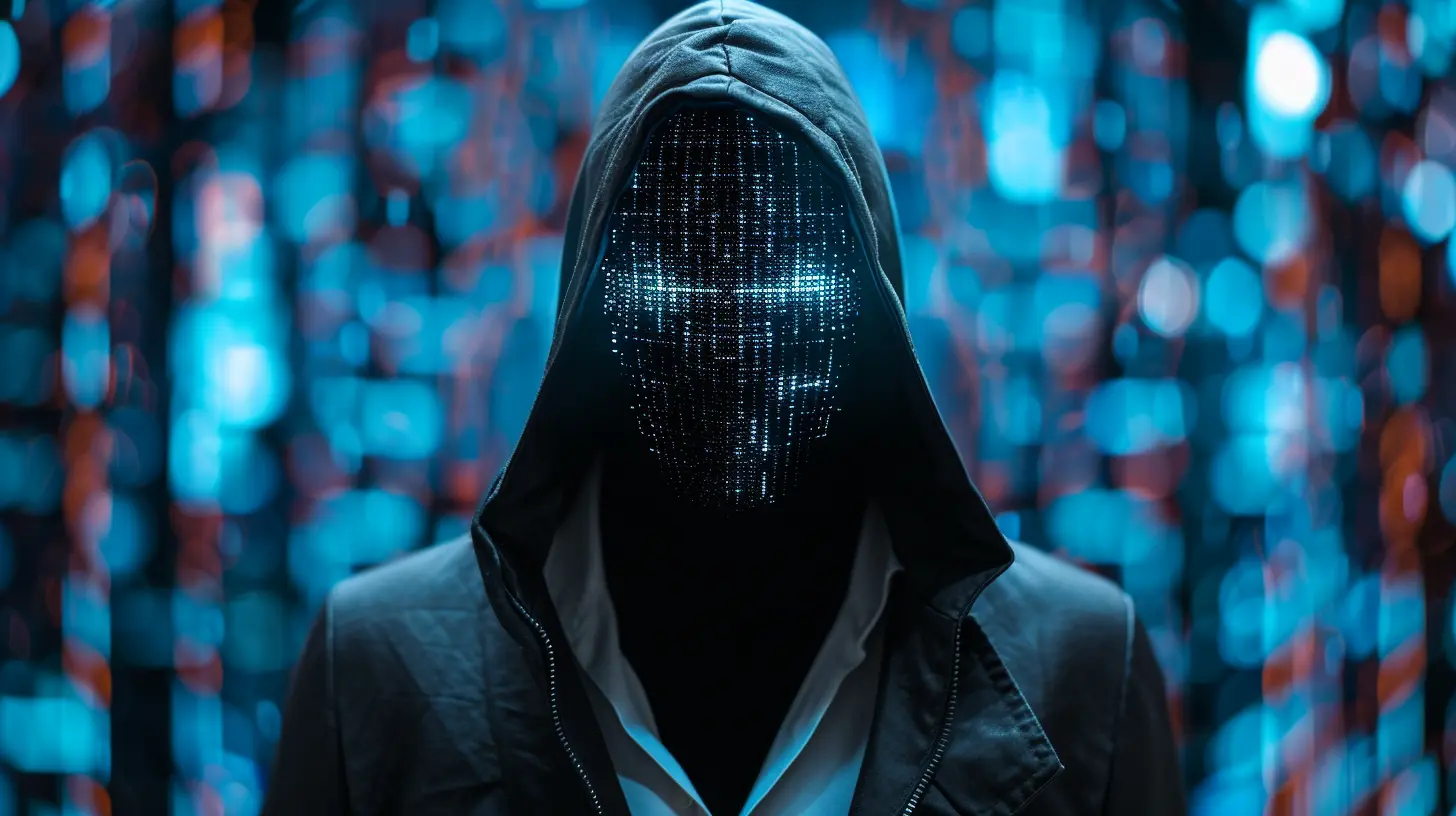The Role of Cybersecurity in Protecting Intellectual Property
12 June 2025
Let’s face it—ideas are the new currency. From tech startups to massive multinational corporations, intellectual property (IP) is the secret sauce that drives innovation, growth, and competitive edge. But what happens when that "secret sauce" ends up in the wrong hands?
Yep, we're talking about cyberattacks. In a world where businesses go digital or go home, cybersecurity is the unsung hero standing guard at the gates of innovation. So, let’s dive into the role of cybersecurity in protecting intellectual property, and why it’s something every business—big or small—should care deeply about.
What Is Intellectual Property, Anyway?
Before we go all-in on cybersecurity, let’s define the crown jewels we’re trying to protect. Intellectual property refers to creations of the mind. Think:- Patents (for inventions)
- Trademarks (like the Nike swoosh)
- Copyrights (music, software code, etc.)
- Trade secrets (Coke’s recipe, Google’s algorithm—those kinds of things)
These aren’t just ideas floating around in someone’s brain. They're business assets—often worth millions or even billions. In the digital age, these assets are stored and transferred electronically, making them juicy targets for cybercriminals.
The Digital Playground: Where IP Lives Now
Ten years ago, your IP might’ve lived in a locked file cabinet. Today? It’s stored on servers, the cloud, and sometimes on a developer’s laptop in a coffee shop. Which means there are more entry points for hackers than ever before. Yikes.Whether it’s blueprints for a new product, source code for your flagship app, or sensitive R&D data—your IP is probably floating around in the digital ether. And that makes it vulnerable.
Why Cybercriminals Want Your IP
So why are hackers so into stealing intellectual property? It’s not like they’re going to start manufacturing your product line and open up shop next door—right?Well, not so fast.
Here’s what cybercriminals can do with stolen IP:
- Sell it on the dark web: There's a thriving black market for proprietary software, product designs, and even research findings.
- Corporate espionage: Competitors might pay big bucks to gain an edge.
- Nation-state advantage: Countries sometimes steal tech to boost their own industries.
- Sabotage: Some attackers just want to wreck your business for kicks or revenge.
You might not even realize your IP has been stolen until a knock-off version of your product hits the market months later.
So, Where Does Cybersecurity Come In?
Let’s think of cybersecurity as your digital bouncer. Its job? To keep the bad guys out, and also to make sure your own team knows the rules of the club.Cybersecurity involves practices, tools, and strategies to protect your digital assets from unauthorized access. When it comes to IP, here's how cybersecurity plays a starring role.
1. Data Encryption: Turning Secrets into Mumble Jumble
If you’ve ever seen gibberish strings of letters and numbers in movies when a hacker’s typing away, that’s probably encryption. And it’s one of your best friends in IP protection.Encryption ensures that even if someone manages to intercept your IP files, they can’t make any sense of them without the right key.
Bonus? Encryption isn’t just for files. It can also protect emails, cloud folders, and even messaging apps. Think of it as scrambling your secrets before sending them through digital pipes.
2. Access Control: Not Everyone Needs the Keys
Ever heard the phrase “loose lips sink ships”? Well, loose access policies can sink your IP ship real fast.Access control is about making sure only the right people have access to certain data. Your junior developer probably doesn’t need access to your patented algorithm, right?
This means:
- Strong user authentication (two-factor or even biometric)
- Role-based access (only grant what’s needed)
- Revoking access the moment someone leaves the company
3. Network Security: Guarding the Digital Perimeter
Your network is the highway your data travels on. If that highway is riddled with potholes—or worse, wide open for anyone to use—your IP is going to get hijacked.Network security includes:
- Firewalls
- Intrusion Detection Systems (IDS)
- VPNs (especially for remote teams)
- Secure Wi-Fi protocols
Think of it as building a fence around your digital house, and then installing cameras and guards to watch for break-ins.
4. Employee Training: Your Team Can Be Your Weakest Link
Here's a hard truth: the most common cybersecurity breaches happen because someone clicked a sketchy link. Yep, that’s it.You can have all the high-tech tools in the world, but if your team doesn’t know the basics of cyber hygiene, your IP is still at risk. That’s why security awareness training is crucial.
Teach your employees to:
- Spot phishing emails
- Use strong passwords
- Avoid using public Wi-Fi without protection
- Report suspicious activity fast
Training is like giving your team digital street smarts.
5. Endpoint Security: Don’t Forget the Devices
Phones, tablets, laptops—they're all part of the system now. And each one is a potential backdoor to your sensitive data.Endpoint security involves protecting these devices with:
- Anti-malware software
- Remote wipe capabilities
- Regular software updates
- Secure configurations
Imagine putting a lock on every single door to your house, not just the front one. That’s endpoint security in action.
6. Cloud Security: The Sky’s NOT the Limit
Cloud storage is super convenient, especially for collaboration. But if it's not secured properly, you're inviting trouble.Cloud security involves:
- Choosing reputable cloud providers
- Encrypting data before uploading
- Using strong access controls
- Enabling activity logging and monitoring
Remember: if it’s in the cloud, it still needs rain gear. (Okay, bad metaphor—but you get the idea.)
7. Incident Response Strategy: Always Have a Plan B
Let’s be real—no system is 100% bulletproof. You might do everything right, and still find yourself facing a cyber threat. That’s where an incident response plan comes into play.This plan outlines:
- How to detect and contain the breach
- Who is responsible for what
- Communication plans (internal and external)
- Recovery protocols
Think of it as a fire drill for digital disasters. The faster you respond, the more damage you can control.
Real-World Examples of IP Theft (And What We Can Learn)
Still not convinced? Let’s look at a few cautionary tales.1. Tesla’s Source Code Leak
In 2020, a former Tesla employee stole source code for its Autopilot system. He uploaded it to his personal cloud accounts before moving to a competitor. Tesla caught him, but the damage had already been done.👉 Lesson: Insider threats are real. Monitor employee access and activity.
2. COVID-19 Vaccine Research Hacked
During the height of the pandemic, multiple countries' pharmaceutical teams were targeted by cyber-espionage. Sensitive vaccine research was on the line.👉 Lesson: Even government-grade IP isn't safe. You need every layer of protection possible.
3. Google vs. Uber (Waymo Case)
A former Google engineer transferred over 14,000 files containing proprietary designs for self-driving car tech. He left the company—and joined Uber.👉 Lesson: IP doesn’t just vanish when an employee leaves. Exit protocols matter.
The Financial Toll of IP Theft
Okay, so the tech itself is fascinating—but let’s talk money.According to the U.S. Chamber of Commerce, IP theft costs the U.S. economy as much as $600 billion a year. And it’s not just about lost revenue. It’s:
- Legal fees
- Reputation damage
- Loss of investor trust
- Delays in product releases
In short, it’s a nightmare. Investing in cybersecurity might seem expensive, but not investing? Way more costly in the long run.
The Future: AI, Quantum Computing, and New Threats
Here’s where it gets even more intense.As cool as AI and quantum computing are, they also bring new cybersecurity challenges. AI can be used to automate attacks, mimic users, or analyze systems for weak spots. Quantum computers could potentially break current encryption standards.
That means cybersecurity isn’t a one-time project—it’s an ongoing evolution.
Final Thoughts: Cybersecurity Isn’t Optional—It’s Essential
Look, if your business has even one ounce of innovation, your intellectual property is a target. Doesn’t matter if you’re a solo entrepreneur developing an app in your garage or a billion-dollar enterprise launching the next big thing—your IP needs protection.Cybersecurity is your digital bodyguard in a world full of threats. And while no system is 100% foolproof, taking proactive steps is the difference between staying ahead—or becoming the next headline.
So ask yourself: are you doing enough to keep your IP safe?
Chances are, there’s room to level up.
all images in this post were generated using AI tools
Category:
CybersecurityAuthor:

Michael Robinson
Discussion
rate this article
2 comments
Shannon Clayton
Great insights on safeguarding innovation! Cybersecurity is like a digital superhero for our intellectual treasures. By staying vigilant and informed, we can protect our ideas from lurking threats. Remember, a secure future is a bright future—let’s keep our creativity safe and sound!
June 17, 2025 at 10:37 AM

Michael Robinson
Thank you for your insightful comment! Cybersecurity truly is essential in safeguarding our creative assets and ensuring a secure future for innovation. Let’s continue to prioritize protection for our ideas!
Gianna McCracken
Empower innovation—strong cybersecurity safeguards our creative future!
June 14, 2025 at 3:53 AM

Michael Robinson
Absolutely! Strong cybersecurity is essential for safeguarding intellectual property, enabling innovation to thrive without the fear of theft or infringement.


